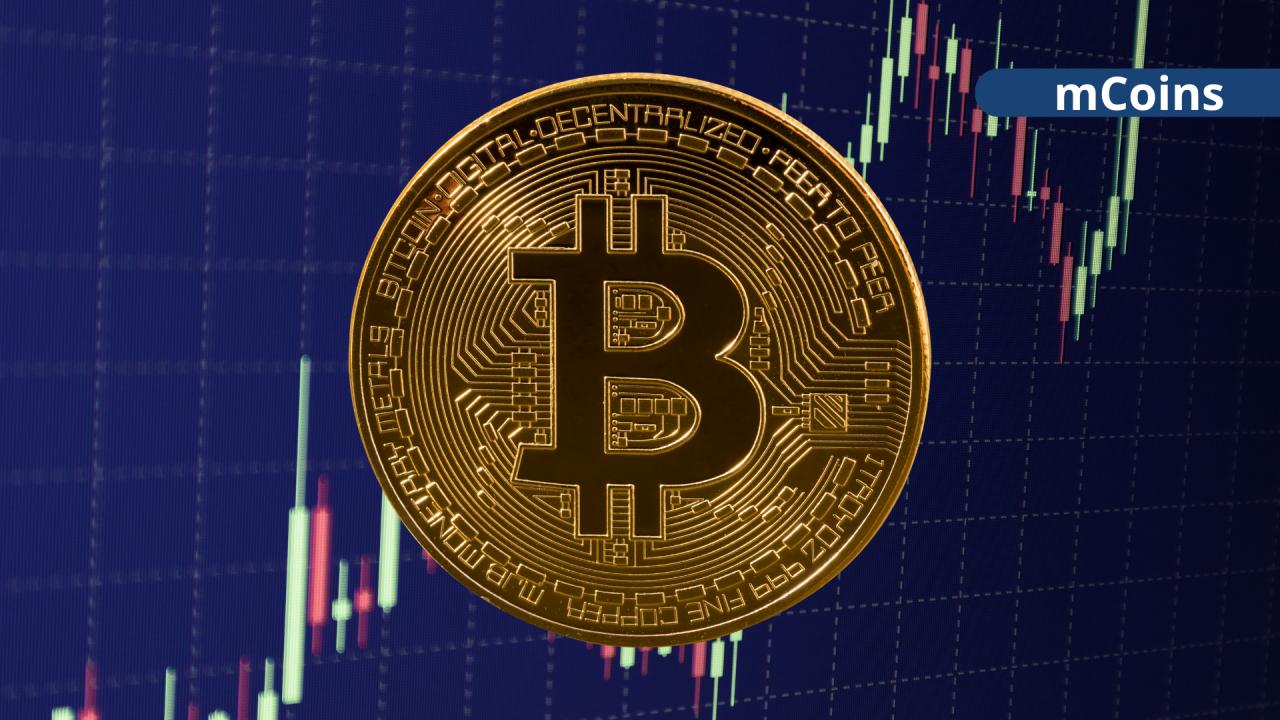Bitcoin, the pioneering cryptocurrency, has experienced significant price fluctuations since its inception. This analysis aims to forecast potential price peaks during the next bull run, considering historical trends and market cycles.
Historical Analysis
Bitcoin's history is marked by dramatic highs and lows. For instance, after reaching $1,127 in November 2013, it plummeted to $172 in January 2015. Subsequent peaks and troughs followed, with a notable high of $67,145 in November 2021 and a low of $15,742 in November 2022. These fluctuations are central to understanding Bitcoin's market behavior.
Methodology
Our analysis employs two primary methods to project Bitcoin's future price targets: linear regression and the calculation of average growth rates. Initially, we applied a linear regression model to historical Bitcoin prices. This model, formulated as \( y = mx + b \), predicts future prices (\( y \)) based on time (\( x \)). Here, \( m \) represents the slope of the regression line, indicating the rate of price change over time, while \( b \) is the y-intercept, representing the estimated price at the starting point of the analysis.
Following the regression analysis, we calculated the average growth rate between historical peak prices of Bitcoin. This was done using the formula \((P_{current} - P_{previous}) / P_{previous}\), where \(P_{current}\) and \(P_{previous}\) are the prices at the current and previous peaks, respectively. The derived average growth rate was then adjusted to create three scenarios: bearish, middle, and bullish.
These adjusted growth rates were applied to the most recent peak price to estimate future targets. It is important to note that while these methods are grounded in historical data and mathematical models, predictions in the cryptocurrency market are inherently speculative and subject to various uncertainties.
Price Predictions
- Bearish Target: Approximately $380,901, assuming a conservative market growth.
- Middle Target: Approximately $694,656, based on the average historical growth rate.
- Bullish Target: Approximately $1,008,412, in an optimistic scenario with higher growth rates.
Timeframe Considerations
Predicting the exact timing of these targets is challenging due to market volatility. Historically, Bitcoin cycles occur approximately every four years, often aligning with the halving events. The next peak could be anticipated in the 2024-2025 period, with the bullish scenario possibly extending into the late 2028-2029.
Conclusion
While this analysis provides a structured approach to forecasting Bitcoin's price, it's crucial to consider the unpredictable nature of the cryptocurrency market. Factors such as regulatory changes, technological advancements, and global economic conditions can significantly influence actual market outcomes.
This article, presenting an analysis of potential future price peaks of Bitcoin, was generated with the assistance of an artificial intelligence known internally as "Jarvis". It is important to emphasize that the forecasts and analyses provided herein are speculative estimates based on historical data and mathematical models. They should not be construed as financial advice. The cryptocurrency market is highly volatile and unpredictable, and as such, potential investors should conduct thorough research and consult with financial experts before making any investment decisions.
Python script:
def growth_rate(previous_value, current_value):
return (current_value - previous_value) / previous_value
peak_prices = [1127, 19423, 67145] # Peak prices from the historical data
trough_prices = [172, 3506, 15742] # Trough (low) prices from the historical data
# Calculate the growth rates from each peak to the next
peak_growth_rates = []
for i in range(len(peak_prices) - 1):
rate = growth_rate(peak_prices[i], peak_prices[i + 1])
peak_growth_rates.append(rate)
# Calculate the average growth rate for peaks
avg_peak_growth_rate = sum(peak_growth_rates) / len(peak_growth_rates)
# Similarly, calculate the growth rates for troughs
trough_growth_rates = []
for i in range(len(trough_prices) - 1):
rate = growth_rate(trough_prices[i], trough_prices[i + 1])
trough_growth_rates.append(rate)
# Calculate the average growth rate for troughs
avg_trough_growth_rate = sum(trough_growth_rates) / len(trough_growth_rates)
# Using the most recent peak and trough as a base for future predictions
most_recent_peak = peak_prices[-1]
most_recent_trough = trough_prices[-1]
# Define target scenarios based on varying degrees of the average growth rates
# For peak targets
bearish_peak_target = most_recent_peak * (1 + avg_peak_growth_rate * 0.5)
middle_peak_target = most_recent_peak * (1 + avg_peak_growth_rate)
bullish_peak_target = most_recent_peak * (1 + avg_peak_growth_rate * 1.5)
# For trough targets
bearish_trough_target = most_recent_trough * (1 + avg_trough_growth_rate * 0.5)
middle_trough_target = most_recent_trough * (1 + avg_trough_growth_rate)
bullish_trough_target = most_recent_trough * (1 + avg_trough_growth_rate * 1.5)
# Print the calculated target prices
print("Peak Targets:")
print("Bearish Peak Target: ${:,.2f}".format(bearish_peak_target))
print("Middle Peak Target: ${:,.2f}".format(middle_peak_target))
print("Bullish Peak Target: ${:,.2f}".format(bullish_peak_target))
print("\nTrough Targets:")
print("Bearish Trough Target: ${:,.2f}".format(bearish_trough_target))
print("Middle Trough Target: ${:,.2f}".format(middle_trough_target))
print("Bullish Trough Target: ${:,.2f}".format(bullish_trough_target))




